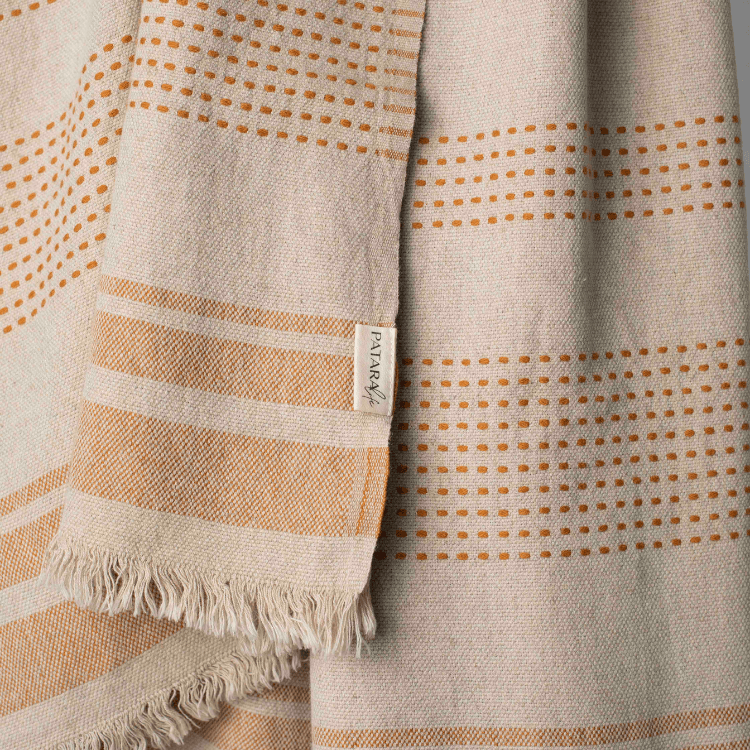Linen is one of the oldest and most loved fabrics in the world. For centuries, it has been admired for its natural beauty, breathability, and durability. Today, linen continues to find a special place in modern homes — from breezy summer clothing to elegant linen throws, linen blankets, and linen towels that elevate everyday routines.
But as with all natural fibres, caring for linen properly is essential if you want it to look beautiful and last for decades. The good news? Linen is surprisingly easy to look after. With a little mindful care, it becomes softer, stronger, and more comfortable with every use.
In this ultimate guide, we’ll explore everything you need to know about how to care for linen, including washing, drying, storing, and keeping your linen pieces at their best.
Why Proper Linen Care Matters
Linen is made from the fibres of the flax plant, one of the oldest cultivated plants in human history. These fibres are naturally strong and resistant to wear, making linen one of the most durable textiles available. In fact, with the right care, linen throws and towels can last for decades — becoming even softer and more beautiful with age.
Unlike synthetic fabrics, which break down quickly, linen is a long-term investment in both sustainability and style. By following proper care techniques, you’ll extend the life of your pieces while maintaining their natural elegance.
Washing Linen: Gentle but Effective
One of the most common questions people ask is: “Can you machine-wash linen?” The answer is yes! Linen is strong enough to be washed in a machine, but it needs a little extra care.
How to Wash Linen Throws and Towels
-
Use a gentle cycle – Select a delicate or wool setting if your machine has one. This prevents unnecessary friction.
-
Lukewarm water works best – Keep temperatures around 30°C. Hot water can weaken the fibres over time.
-
Mild detergent only – Avoid bleach or fabric softeners. Eco-friendly, liquid detergents are ideal for linen.
-
Wash separately – To prevent snagging, wash your linen throws and linen towels apart from heavy items like jeans or clothes with zippers.
💡 Pro tip: Spot-clean stains quickly with a mild soap and cold water before putting linen in the wash.
Drying Linen: Let Nature Do the Work
How you dry your linen is just as important as how you wash it.
-
Air-drying is best – Hang your linen indoors or outdoors in a shaded area. This protects the fibres and reduces environmental impact.
-
If using a dryer – Choose a low heat setting and remove while still slightly damp. Linen dries faster than most fabrics.
-
Avoid over-drying – Linen doesn’t need high heat to stay fresh, thanks to its natural antibacterial properties.
Ironing and Steaming Linen
Wrinkles are part of linen’s charm. Many people love its relaxed, lived-in look. But if you prefer a smoother finish:
-
Iron while damp – Use a medium-hot setting on the reverse side.
-
Steam for ease – A garment steamer is gentle and brings out linen’s natural drape without flattening the fibres.
Storing Linen Properly
Linen loves to breathe, so proper storage will keep it fresh between uses.
-
Choose a cool, dry place – Avoid damp areas that could cause mildew.
-
Skip plastic bags – Instead, use cotton storage bags or fabric covers that allow airflow.
-
Fold loosely – Don’t compress linen too tightly; allow it to keep its natural softness.
Linen Towels vs Cotton Towels: Which Is Better?
When it comes to bath and hand towels, many people wonder how linen towels compare to traditional cotton.
-
Absorbency – Linen absorbs moisture quickly and dries faster than cotton, making it perfect for everyday use.
-
Durability – Cotton can wear thin over time, while linen fibres remain strong for decades.
-
Texture – Linen has a slightly crisp feel that becomes softer with every wash, whereas cotton starts soft but may lose structure over time.
-
Sustainability – Linen is more eco-friendly, requiring fewer pesticides and less water during cultivation.
For those seeking quick-drying, naturally antibacterial towels that last, linen towels are the clear winner.
Styling Ideas for Linen Throws
Caring for your linen doesn’t just keep it beautiful — it ensures your throws remain a stylish part of your home for years to come. Here are a few ways to enjoy them:
-
On the sofa – Drape a throw casually over an armrest for relaxed elegance.
-
On the bed – Layer at the foot of your bed to add depth and texture.
-
Outdoors – Use as a lightweight cover for picnics or chilly evenings.
-
As a travel companion – A linen throw is perfect for road trips or flights thanks to its breathability and easy care.
Explore our full Linen Throws collection to find versatile pieces that suit every season.
Frequently Asked Questions About Caring for Linen
1. Can you wash linen in hot water?
It’s best to avoid hot water. Lukewarm or cold water protects the fibres and keeps your linen in top condition.
2. Should you dry-clean linen?
Not usually necessary. Machine washing on a gentle cycle is safe and effective for most linen products.
3. Do linen towels get softer?
Yes! Linen towels may feel crisp at first, but they soften beautifully with every wash.
4. Is linen prone to shrinking?
Linen can shrink if exposed to high heat. Always wash in lukewarm water and dry gently.
5. How long do linen throws last?
With proper care, linen throws can last for decades, often becoming family heirlooms.
Final Thoughts
Learning how to care for linen is simple — and the rewards are endless. By washing gently, drying with care, and storing properly, your linen throws, blankets, and towels will stay soft, strong, and stylish for years to come.
At Patara Life, we’re proud to curate collections that celebrate linen’s enduring charm and sustainability.
-
Discover our Linen Throws — perfect for layering, lounging, or gifting.
-
Explore our Linen Towels — quick-drying, eco-friendly, and made for everyday luxury.
Bring the beauty of linen into your home and enjoy the timeless comfort of a fabric that only gets better with age.



